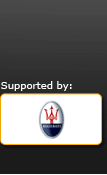
|
 |

Vintage Values
Tim Atkin examines the latest ways to look after your wine
Well over three quarters of the wine we buy in the UK is consumed within 24 hours of purchase. I suspect that most of the remaining 25% spends a few weeks in the fridge or a wine rack at most. But a small yet increasing percentage of wine is bought to keep. More and more of us like the idea of ‘cellaring’ our own wine. Temperature fluctuation is the single biggest problem for wine as it ages. Wine can cope with a certain amount of heat or cold, but not extremes of both. Be warned. A friend of mine stored his wine in an outdoor loo, which was fine until we had a freezing winter and he ended up with a lot of very expensive ice lollies. At the opposite end of the temperature spectrum, you should avoid putting your wine in the airing cupboard, kitchen or the attic, unless you want it to age prematurely or taste like Madeira on an off day. Wines like a certain amount of humidity, but not too much or the labels can turn mouldy. If you have a cool, deep cellar, then you’re very fortunate. But where should you keep your wine otherwise? There are a number of alternatives. If you don’t have a lot of wine, one option is a Eurocave (0207 935 4679; www.eurocave.co.uk), which is rather like a large fridge without the vibration (another thing that is detrimental to wine quality in the medium to long term). Capacities range from 38 to 206 bottles. If you’re serious about wine, a Spiral Cellar (0845 241 2768; www.spiralcellars.com) works out as the best value option in the long run. These are installed on site and come in a variety of sizes. The Spiral Cellar is effectively a downwards extension. Think of it as a kind of honeycomb (without the honey) made out of pre-case concrete modules that act as wine bins as well as part of the cellar’s structure. It requires no heating or cooling and is ideal for wine storage, being cool (10-12C), humid and vibration free. A Spiral Cellar can be installed in any ground floor or basement. Basement installations prove a little more challenging, as they involve removing the spoils up to a skip on ground floor level which is pretty labour intensive. Having said that, out of 300 properties surveyed annually, only one or two are unable to have one. Another possibility is to store your wine with a professional bonded warehouse company such as Octavian (01225 810735; www.octavian.co.uk) or London City Bond (01375 853700; www.lcb.co.uk), although this can add up if you store a lot of wine over a long period of time. If you don’t want to splash out on any of these options, the least worst alternative is to store your wine under the stairs or at the back of a cupboard. Wherever you put them, wines should be stored horizontally, so that the corks stay wet and non-porous. Remember two things: watch out for nearby radiators and pipes and try not to expose your wines to direct sunlight. Otherwise, there’s always the fridge. |
Which wines benefit from cellaring?
White wines that age well are rarer, however, some of the most age-worthy grape varieties are Chardonnay (especially from top sites in the Burgundian appellations of Chablis, Meursault and Chassagne- and Puligny-Montrachet), and Champagne (generally made from one white grape, Chardonnay and two red, Pinot Noir and Pinot Meunier). Investing in Wine It is certainly possible to turn a profit in the medium to long term, but only if you follow certain golden rules. The two most important are: buy what the market regards as the best wines and buy them early. The top wines, at least as far as investment are concerned, are nearly all blue chip clarets, such as Châteaux Lafite, Latour, Haut-Brion, Margaux, Mouton-Rothschild, Pétrus, Le Pin, Cheval Blanc, Ausone, Léoville-Las-Cases, Cos d’Estournel, Pichon-Baron and Pichon-Lalande, but also include the odd Burgundy, Sauternes and Champagne. How do you know what the market is doing? A good place to start is the Liv-ex 100 Fine Wine Index (www.liv-ex.com), which tracks the prices of the top 100 wines in the wholesale fine wine market. ‘With the current low interest rates and uncertain property market, now is the time to invest in your home’, says Lucy Hargreaves, Director of Spiral Cellar, ‘investing in a Spiral Cellar brings additional benefits - not only can you collect and store wine at home, you can buy wine when it is young and at its cheapest and drink it at its best and most valuable. You’ll save on warehousing costs and with the increased value in your property and your wine the cellar pays for itself.’ |
|||




 Some wines are better suited to cellaring than others. Reds with plenty of tannin, such as Barolo, red Bordeaux and Port, are obvious candidates, as are top Rhônes (Hermitage, Cornas, Côte Rôtie and Châteauneuf-du-Pape).
Some wines are better suited to cellaring than others. Reds with plenty of tannin, such as Barolo, red Bordeaux and Port, are obvious candidates, as are top Rhônes (Hermitage, Cornas, Côte Rôtie and Châteauneuf-du-Pape). 